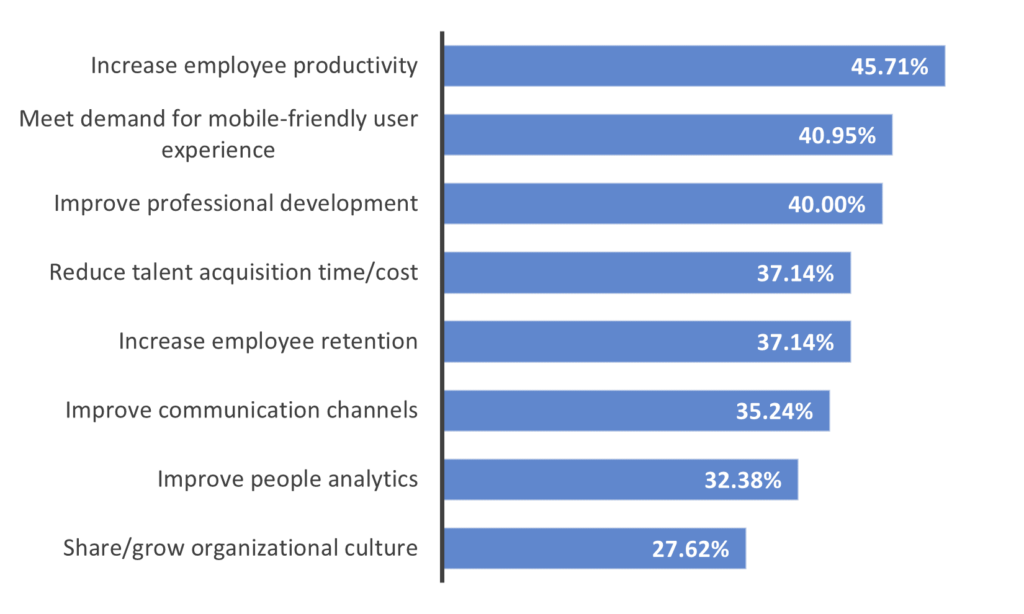Building a Culture of Feedback to Optimize Pulse Surveys
Listening tools intended to measure employee experiences have become commonplace in many organizations. However, like any software, implementation is only part of the journey—adoption and participation are the final stretch. In terms of listening tools such as pulse surveys, there needs to be a culture of feedback that empowers workers to engage and provide insight.
Why do companies need this insight? Your organization likely has challenges that could be improved by simply asking employees about their experiences.
“Measuring employee engagement if you are a serious organization is something you have to do at this point,” says Wojtek Kubik, Head of Product Management for Employee Experience at Qualtrics. “Organizations are identifying underlying problems, but some come in to address big problems—such as high turnover rates within 90 days of hire, which often turn out to be onboarding issues.”
Explore related questions
He adds that organizations will use employee feedback to determine the most optimal regions for investment and to help identify areas of emphasis such as Diversity and Inclusion. There are many use cases and reasons for companies to bring in pulse surveys and continuous feedback, but how can they successfully get the data they need?
Best Steps for Building a Culture of Feedback
Companies may find themselves deploying pulse surveys but not getting the expected response. Without the culture of feedback in place, employees may not feel comfortable answering the typically one-question surveys. They may also ignore the surveys entirely because they don’t see that they will bring about anything meaningful.
What can an organization do to create a culture of feedback? Kubik offers three critical tips based on his experience with customers
- “Employees must feel safe in giving feedback.” Employees will be more open to answering questions if they feel assured they can give constructive criticism without retribution. Confidentiality is built in Qualtrics Employee Pulse Survey Tool and similar products, but there’s more to it. Employees have to believe that privacy is real, and they have to trust leadership.
- “Asking and not doing something is worse than not asking questions at all.” If you start deploying pulse surveys, leadership needs to act on the feedback they receive. There need to be concrete actions taken. Otherwise, response rates will dip considerably. On the flip side, if employees see that the surveys mean something, then even staunch holdouts might start participating.
- “Consistency—you turn the pulse surveys into a steady rhythm.” Part of building trust and a culture of feedback is being consistent with the surveys. The consistency comes with reaching out to employees and taking action related to the data.
Building a culture of feedback takes time—but if employees have a level of trust in the leadership. That trust is paid back through action and consistency. Then pulse survey data can be a valuable tool for any organization.
The Value of Improving Employee Experience
Pulse surveys typically aim to identify issues within employee experience that may not otherwise be obvious or drill down into known issues and find root causes.
“Our goal with employee experience tools is to really help companies understand where their employees are at and what they can do to make employees happier, more productive, and more cohesive,” says Kubik.
Our research into employee experience suggests that the top goal for many companies when it comes to improving employee experience is employee productivity.
Top Objectives of Employee Experience Strategy

Source: SAPinsider, June 2021
Suppose your organization can tap into a culture of feedback and build an effective pulse survey program, which includes implementing programs based on employee responses. In that case, the benefit of more productive employees is achievable.
What This Means for SAPinsiders
Consider your culture when deploying pulse surveys. Are you sending out your surveys, and the responses are low? You may be facing an issue of culture—either your employees may fear retribution, or they don’t believe that the surveys will lead to any positive change.
Show you care beyond just the survey. Sending out pulse surveys themselves won’t automatically prove to employees that leadership cares what they think. The surveys must be consistently deployed, and noteworthy action must be taken based on the response data. These steps can help build a culture of feedback.





